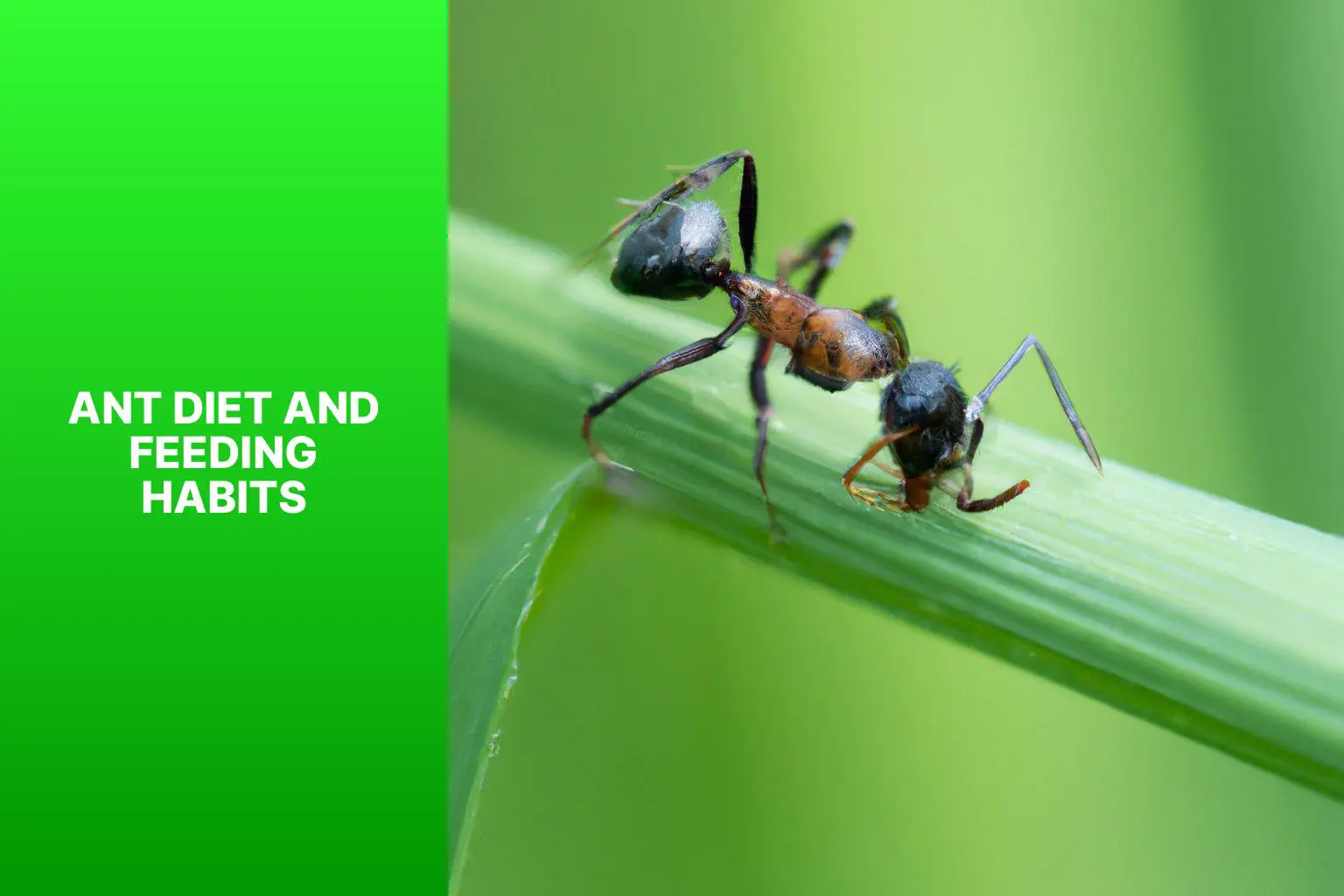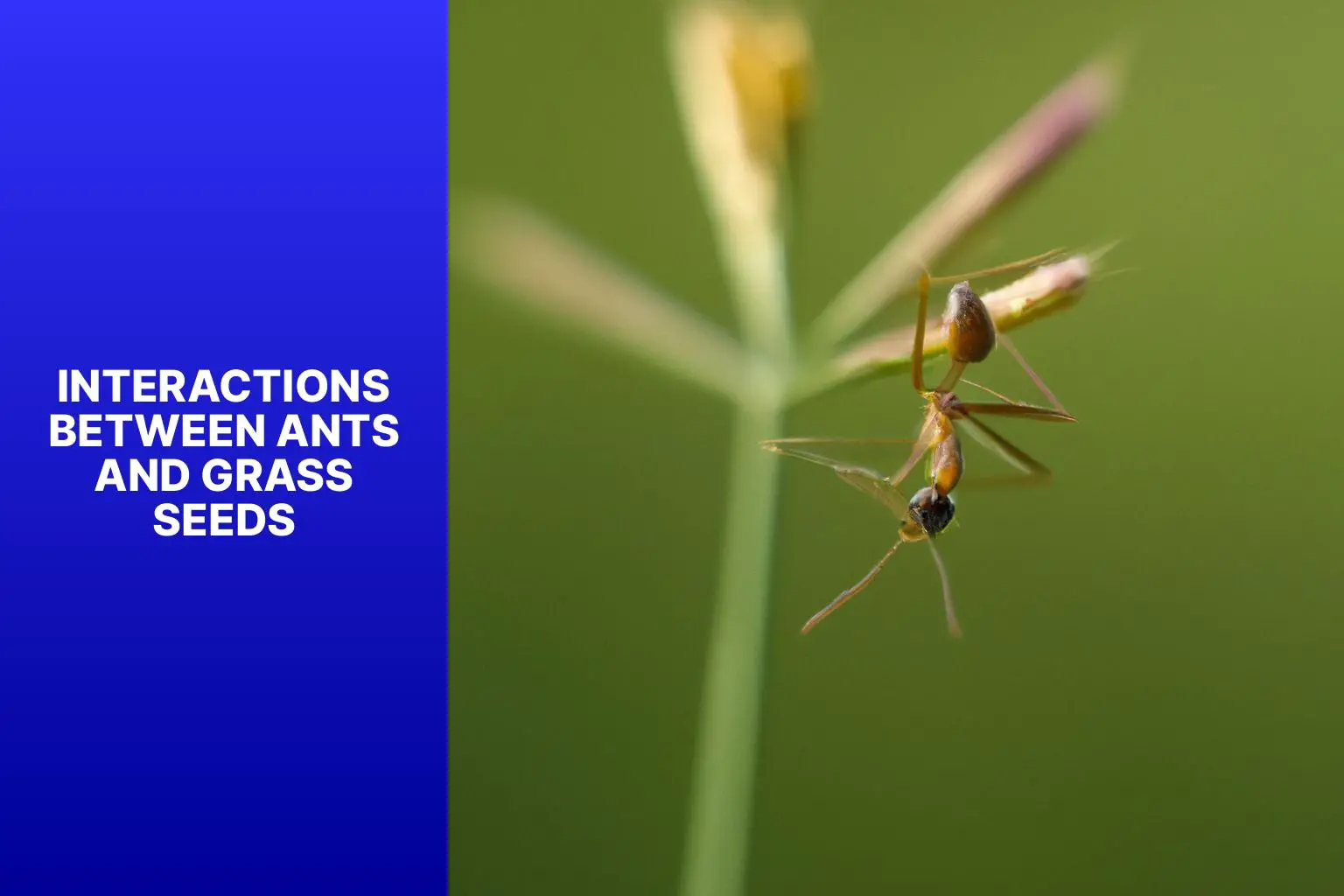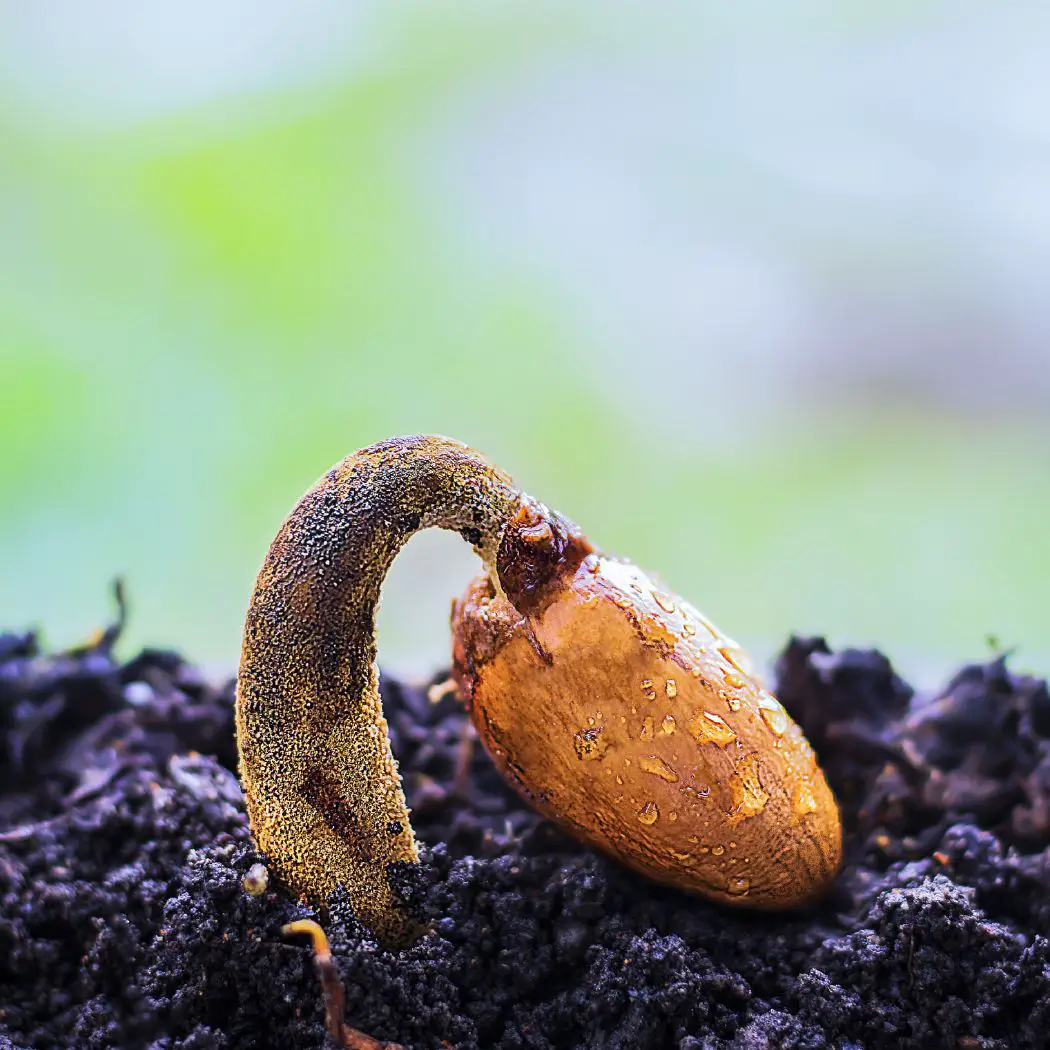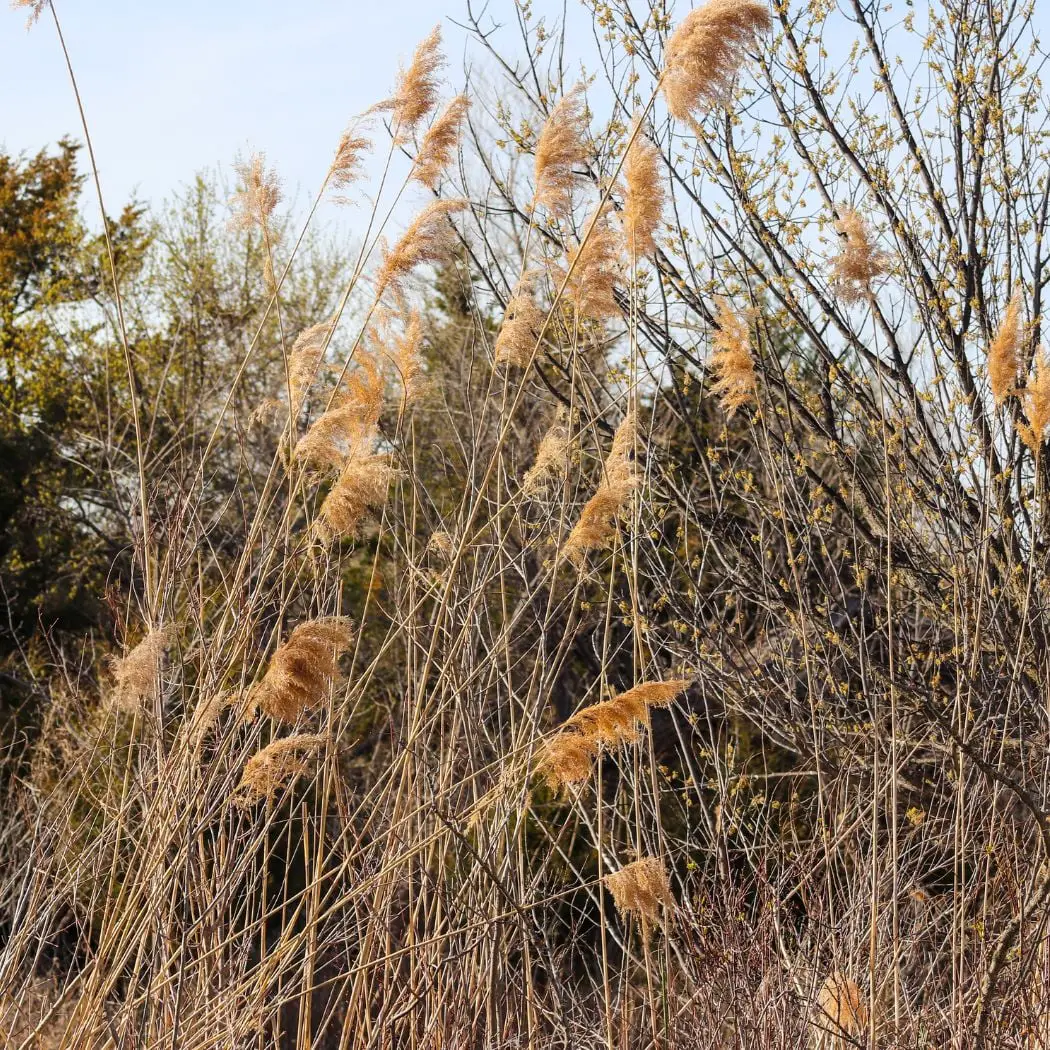Ants, known for their diverse feeding habits, have a significant impact on ecosystems. Understanding their diet and feeding habits is essential to comprehend their interactions with various organisms, including grass seeds. This article explores whether ants consume grass seeds, the interactions between ants and grass seeds, and the role of ants in seed dispersal.
Ants have a varied diet, ranging from sugary substances like nectar and honeydew to protein sources like other insects and small invertebrates. They play a crucial role in the decomposition process by feeding on dead plant and animal matter. Ants are opportunistic foragers and are exceptionally skilled at finding food sources.
When it comes to grass seeds, ants can play both beneficial and harmful roles. Some ant species feed on grass seeds directly, consuming them as part of their diet. They may collect and store seeds in their nests for later consumption. The extent to which ants consume grass seeds varies depending on the ant species and environmental factors.
The interaction between ants and grass seeds in their environment is complex. Ants can help scatter grass seeds while foraging, aiding in their dispersal. They may carry seeds to their nests, unintentionally spreading them to new locations. On the other hand, certain ant species may disrupt grass seed germination and growth by disturbing the seedbed or consuming the seeds entirely.
Key takeaway:
- Ants have a diverse diet: While ants primarily consume sugary substances, they also feed on insects, seeds, and other organic matter.
- Ants do not specifically target grass seeds: Although ants may come across grass seeds while foraging, they do not have a specific preference for consuming grass seeds as part of their diet.
- Ants play a role in seed dispersal: Ants inadvertently aid in seed dispersal by carrying small seeds on their bodies, facilitating plant growth in diverse locations.
Ant Diet and Feeding Habits

Photo Credits: Fruitsveges.Com by Samuel Roberts
Ants have a diverse and varied diet, reflecting their feeding habits. They consume a wide range of nutrients, including carbohydrates, proteins, fats, oils, nectar, fruits, seeds, insects, and even the sweet substances produced by aphids and other insects. In addition, ants scavenge for food scraps and crumbs that are left behind by humans. While some ants are herbivorous and mainly consume plant material, not all of them specifically eat grass seeds. The specific diet of ants varies depending on their species and ecological niche. Ants communicate through chemical signals, and they often forage together to ensure the entire colony is well-fed. Their food preferences and foraging behaviors are influenced by factors like environmental conditions, food availability, and the needs of the colony.
What Do Ants Eat?
Ants have a diverse diet and eat a variety of foods. So, what do ants eat? Let’s take a look:
- Sugary substances: Ants are attracted to sweet foods like nectar, honeydew, and sugary fruits.
- Proteins: Ants also indulge in dead insects, small invertebrates, and carcasses of larger animals.
- Seeds and grains: Some ant species feed on easily carried seeds and grains.
- Fungi: Certain ant species rely on fungi for nutrition.
- Plant sap: Ants extract plant sap, especially from plants with extrafloral nectaries.
- Oils and fats: Some ants collect oils and fats from sources like seeds, nuts, or dead animals.
- Crops and stored food: Certain ant species can damage crops and infest stored food.
- Other insects: Ants prey on other insects, including larvae, pupae, and eggs.
It is important to note that the diet of ants varies depending on their species and environment. Ants contribute to ecosystems as decomposers, predators, and seed dispersers, maintaining balance in their habitats.
How Do Ants Find Food?
Ants have developed efficient strategies for finding food. One of these strategies is the use of chemical trails. By releasing pheromones, ants are able to communicate and guide other ants towards food sources.
Another strategy is exploration. Ants cover large areas, using their senses to detect potential meals. They also employ random searching, moving in a random pattern until they stumble upon food and establish a chemical trail.
Ants follow other insects, such as caterpillars or beetles, by sensing vibrations or chemical signals. The effectiveness of these food-finding strategies demonstrates the adaptability and resourcefulness of ants. Studying ants in action allows us to gain insight into their ingenuity and appreciate their abilities.
Can Ants Eat Grass Seeds?
Ants can indeed eat grass seeds. These tiny creatures have a diverse diet that consists of seeds, insects, and plant matter. During their foraging activities, ants may come across grass seeds and consume them. It’s worth noting that while ants primarily feed on insects and sugary substances, they can also take advantage of grass seeds when they are available.
It’s important to understand that not all ant species have the same preferences when it comes to food. Some ants may favor specific types of seeds or other food sources, while others may not consume grass seeds at all. Factors such as the ant species, their location, and the availability of alternative food sources all play a role in determining their feeding behavior.
In addition to their eating habits, ants play a crucial role in the ecosystem as seed dispersers. By transporting seeds to new locations, ants aid in the spreading and germination of plants. This mutually beneficial relationship between ants and seeds is beneficial for both parties involved.
While it’s true that ants can eat grass seeds, their contribution to the environment extends beyond being mere seed consumers. They fulfill various ecological functions that help maintain the balance of the ecosystem.
Do Ants Consume Grass Seeds as Part of Their Diet?
Ants are known to be opportunistic feeders, consuming a wide range of food sources including grass seeds as part of their diet. They have a diverse and varied diet that encompasses not only seeds but also other plant material, insects, and sugary substances like nectar and honeydew.
In order to search for food, ants rely on their keen sense of smell to locate potential food sources. They cleverly leave behind chemical trails known as pheromones, which serve as a means of communication with other ants, guiding them to the food. This collaborative approach helps ants efficiently locate grass seeds and other edible items.
Interestingly, ants do not consume grass seeds solely for their nutritional benefits. They also utilize them as a survival strategy. Ants store these valuable seeds in underground chambers or within their ant colonies, thus creating a strategic food reserve that can be utilized during periods of scarcity.
It is worth noting that ants also play a crucial role in the dispersal of seeds. Certain ant species actively transport grass seeds to new locations, consequently aiding in plant propagation and colonization.
Interactions Between Ants and Grass Seeds

Photo Credits: Fruitsveges.Com by Patrick Nelson
Interactions between ants and grass seeds are of utmost importance for their dispersal and germination. Ants play a vital role in carrying grass seeds to new locations, thus aiding in their dispersal. Certain grass seeds possess specialized structures known as elaiosomes that attract ants. These ants transport the seeds to their nests, consume the elaiosomes, and discard the remaining seed. This interaction benefits both the ants, as they obtain a nutritious food source, and the seeds, as they are effectively planted in nutrient-rich ant nests.
The activity of ants around grass seeds can significantly enhance their germination rate by improving soil aeration and water penetration through the digging of burrows. It is worth mentioning that some ant species may consume grass seeds, which could potentially have a negative impact on their survival and dispersal. The interactions between ants and seeds also play a role in influencing plant diversity. These interactions contribute to the establishment and growth of various plant species, thereby leading to increased diversity.
Do Ants Benefit or Harm Grass Seeds?
Ants play a significant role in determining whether they benefit or harm grass seeds. The impact that ants have on seeds ultimately depends on various factors, including the species of the ant and the specific circumstances involved.
Certain ant species, such as harvester ants, actively collect and store grass seeds as part of their diet. By doing so, these ants aid in the dispersal of the seeds and contribute to the germination process, ultimately promoting the growth of grass in different ecosystems.
It’s important to note that not all ants have a positive impact on grass seeds. For instance, fire ants can consume grass seeds, which can lead to a decrease in overall grass growth. Ants have the ability to disturb the soil and create tunnels in close proximity to the seeds. This can result in damage or displacement of the seeds, thus impacting their potential for growth. Competition for resources among ants can also hinder the growth of grass seeds.
To truly understand the effect that ants have on grass seeds, it is crucial to consider factors such as the specific ant species, their behavior, and the ecological context in which they are present. By taking these aspects into account, we can gain a better understanding of the complex relationship between ants and grass seeds.
How Do Ants Interact with Grass Seeds in Their Environment?
Ants play a crucial role in the environment as they interact with grass seeds. They disperse grass seeds naturally by carrying them to new locations while foraging for food. Some ants also contribute to seed germination by removing the seed coats. Not all interactions between ants and grass seeds are beneficial. Certain ant species consume grass seeds, which may potentially decrease seed availability for plant growth. Ants can unintentionally inflict damage on grass seeds while foraging or constructing nests, thereby affecting seed viability. The specific interactions between ants and grass seeds vary based on the ant species, characteristics of the seeds, and the surrounding environment.
Researchers have gathered insights by observing harvester ants collecting grass seeds and transporting them to underground storage chambers. This behavior promotes seed dispersal and facilitates growth, illustrating a mutually beneficial relationship between ants and plants. A comprehensive understanding of ants’ interactions, including their interactions with grass seeds, provides valuable knowledge about the dynamics of the natural world.
Ants’ Role in Seed Dispersal
Ants play a crucial role in seed dispersal, aiding in the spread of plant species. Understanding the role of ants in seed dispersal is essential for comprehending plant ecology and maintaining biodiversity. Here are some key points to understand their role:
- Seed transport: Ants pick up seeds and carry them away from the parent plant, dispersing them over a larger area for successful germination and growth.
- Nutrient-rich environment: Ants transport seeds to their nests, creating a nutrient-rich environment for seed growth. They bring in organic matter such as dead insects or plant material, providing essential nutrients for seedlings.
- Protection: Ants protect seeds by burying or storing them in their nests, preventing them from being eaten by other animals and increasing their chances of survival.
- Selective dispersal: Ants selectively transport seeds with a nutritious appendage called an elaiosome, which they feed on. By carrying these seeds away, ants effectively distribute plants with this advantageous trait.
- Quantitative impact: Ants disperse a significant number of seeds, with some studies suggesting they account for up to 30% of seed dispersal in certain ecosystems.
Their actions contribute to the survival and proliferation of numerous plant species.
Do Ants Play a Role in Dispersing Grass Seeds?
Ants play a crucial role in dispersing grass seeds. They contribute to seed dispersal in ecosystems by carrying seeds back to their nests, a process that is scientifically known as myrmecochory. During myrmecochory, ants actively collect grass seeds and transport them to their nests. Some ants go the extra mile by nurturing the seeds, either by storing them in specialized chambers or discarding them in nutrient-rich areas. These actions ultimately promote the germination and growth of the seeds.
Numerous studies have confirmed the significant role of ants in seed dispersal. Ants engage with grass seeds through various interactions: picking them up, carrying them away, or burying them in the soil. It is through these interactions that the ants contribute to the survival and dispersal of grass seeds.
The impact of ants on seed dispersal can vary, depending on the species of grass and the ecological conditions present. Several studies have revealed that ants can substantially increase seed germination rates and contribute to the establishment of grass populations. It is important to note that the effectiveness of seed dispersal by ants may be influenced by factors such as competition with other seed dispersers or prevailing environmental conditions.
Some Facts About Do Ants Eat Grass Seeds?
- ✅ Ants are attracted to grass seed as a food source. (Source: Our Team)
- ✅ Ants can cause damage to lawns by disrupting root growth and removing beneficial fungus from the soil. (Source: Our Team)
- ✅ Ants can attract aphids, which can harm the grass. (Source: Our Team)
- ✅ Ant colonies can quickly outgrow their food source and start searching for more, including grass seed. (Source: Our Team)
- ✅ To prevent ants from stealing grass seed, maintain a healthy lawn with dense turf and moisture-retaining organic material. (Source: Our Team)
Frequently Asked Questions
1. Do ants eat grass seeds?
Yes, ants do eat grass seeds as a food source. They may consume grass seeds if they are lacking other food sources in the garden.
2. Can ants cause damage to lawns?
Yes, ants can cause damage to lawns. They tunnel through the ground, disrupt root growth, and remove beneficial fungus from the soil. They can also attract aphids, which can harm the grass.
3. What can I do to prevent ants from stealing my grass seeds?
To prevent ants from stealing grass seeds, you can maintain a healthy lawn with dense turf and moisture-retaining organic material. Plant the seeds deep enough in the ground and cover them with mulch. Prepare the ground before planting to create the best growing environment.
4. What are some homemade methods to eliminate ants from my seeds?
Some homemade methods to eliminate ants from seeds include flooding the ant hill with boiling water or a vinegar mixture, using a borax and sugar paste, or using natural deterrents like cedar oil or peppermint oil.
5. What other insects can damage grass besides ants?
Other insects that can damage grass include billbugs, grubs, and armyworms. Grasshoppers and earthworms are usually harmless to lawns and can even benefit the soil.
6. How can I get rid of ants in my lawn?
To get rid of ants in your lawn, you can use methods such as boiling water, homemade insecticides (such as vinegar or peppermint oil), or commercial pesticides. It is recommended to address ant infestations to maintain a healthy lawn.


